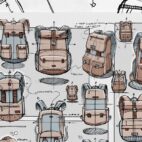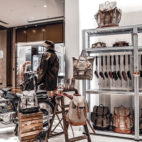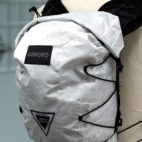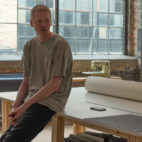Meet the Maker | What Happened Interview
When Slovenia-based brand What Happened came onto our radar, we were immediately keen to learn more. Founded by Neza Peterca, the creative studio creates custom outdoor gear with a focus on ultralight mountaineering backpacks and bikepacking bags. Built for performance in demanding conditions but paired with a playfulness in colorways, What Happened pieces deliver technical dependability without sacrificing personality. Eager to go behind the scenes with this small maker, we asked Neza to share her insights about the brand and her creative design process.
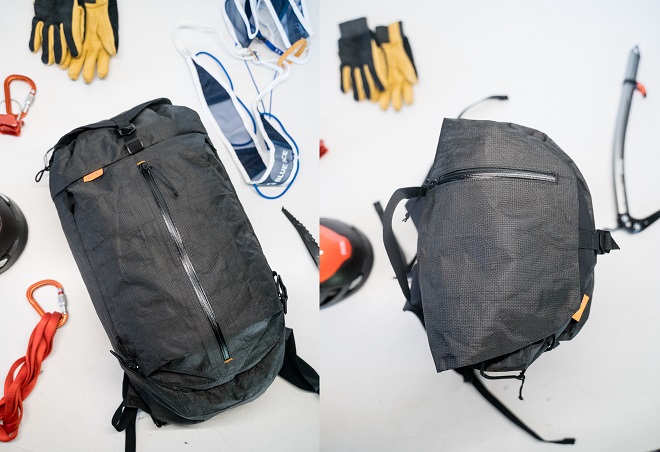
Who are you: tell us a little backstory about yourself?
I’m Neza Peterca, a product designer with a focus on technical backpacks and bags. My journey began in graphic design, but in 2010, I shifted gears and co-founded Blind Chic, a lifestyle backpack brand, marking my entry into the world of product design.
Currently based in Slovenia, a tiny country by the Alps, I split my time between running What Happened and pursuing my passion for outdoor activities. I’m also involved in a mountaineering school and occasionally lead MTB expeditions.
These experiences bring a unique perspective to my design work, allowing me to create technical products that perform very well in rough conditions. It’s this blend of practicality and aesthetics that drives my design process.
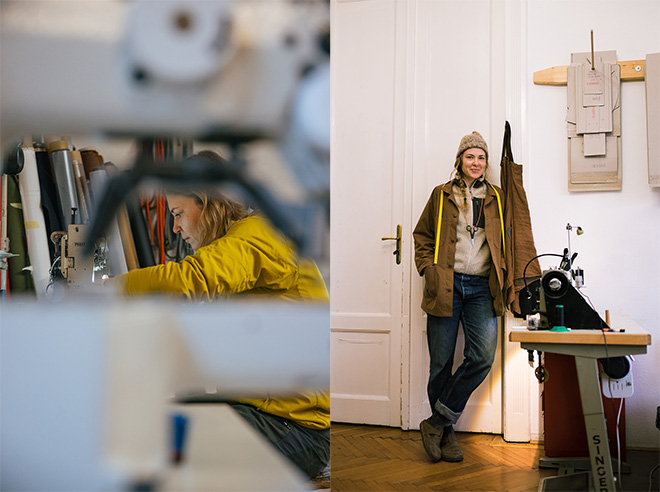
What are the origins of What Happened?
As mentioned above, I co-managed a backpack brand named Blind Chic in my early twenties. After a few years in the market, I realized it was time for a shift. I wanted to step away from the fast-paced consumerism scene, where desires are artificially manufactured. Instead, I chose the path of repair. I was fortunate to have an exceptional mentor, Barbara Heinze, who taught me the art of repairing technical garments and educating others on how to prolong their lifespan. For two years, I traveled with Patagonia’s Worn Wear until Covid disrupted everything. It was then that I knew it was time to establish my own repair workshop. Whenever a customer brought a garment for repair, the question was always, ‘What happened?’ That’s how the name originated. Custom-made gear followed soon after. When you create bespoke gear, it springs from a specific need expressed by the customer. They are the true originators of the idea, unlike mass-produced items. This aligned well with my values.
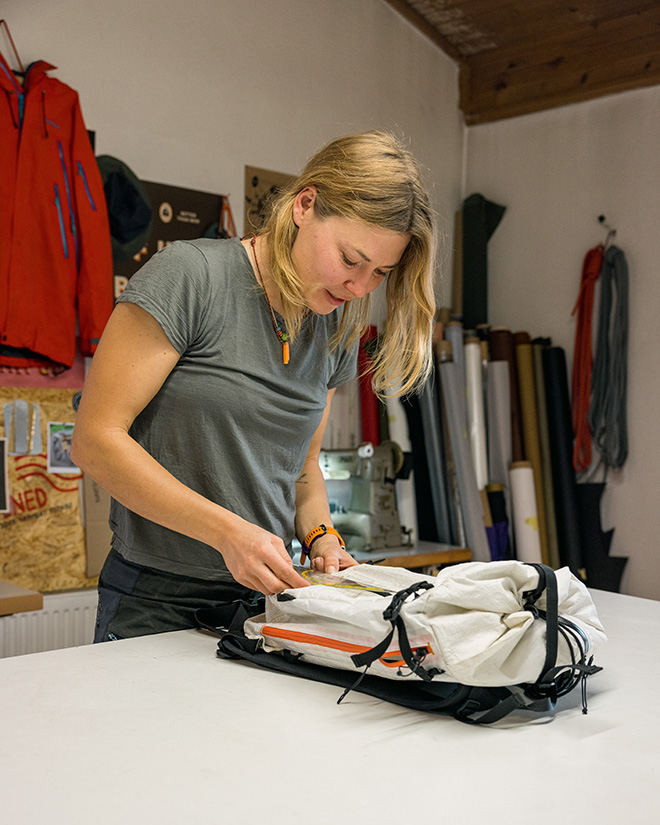
As for my design process, it typically begins with customers approaching me with a broad concept rather than a specific design. The initial phase always involves an extensive conversation where I delve into the client’s needs, their intended use for the product, and get to know them personally. The core philosophy behind custom backpacks is ensuring they fit the individual’s back perfectly. Store-bought backpacks are tailored to an ‘average’ person’s back, which can pose challenges for shorter individuals seeking a larger capacity backpack that fits well. This becomes critical with technical backpacks for activities like climbing, mountaineering, or skiing, where freedom of movement is paramount. Once the fit and capacity are determined, we discuss additional features, tailored to the specific activity. I strive for versatility, so a ski pack isn’t just for skiing, but can be used year-round for different activities.
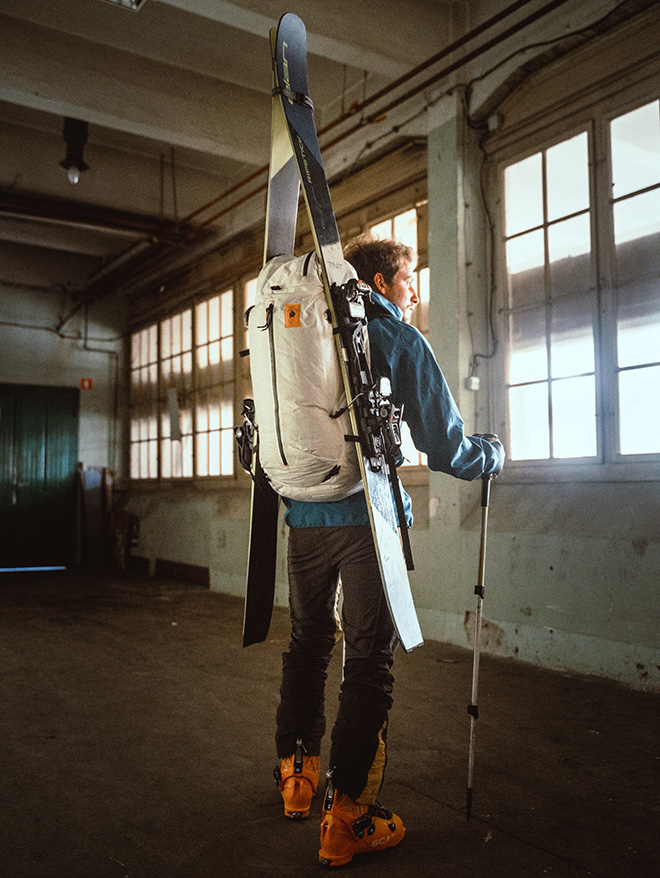
Where are you based and does your working environment have any impact on inspiring or shaping the gear you make? Are you a one-woman studio or do you work with others?
I’m based in Slovenia, a picturesque country nestled on the sunny side of the Alps. The natural beauty and accessibility to the outdoors serve as a constant source of inspiration for my work. It’s a perfect backdrop for testing the gear I create – whether it’s for a spontaneous mountain bike ride or an impromptu climb in the mountains.
Currently, I operate as a one-person studio. However, I’m in the process of finding a second pair of hands to join the team. This task comes with its own set of challenges, as the nature of the work is quite dynamic and doesn’t adhere to a standard routine.
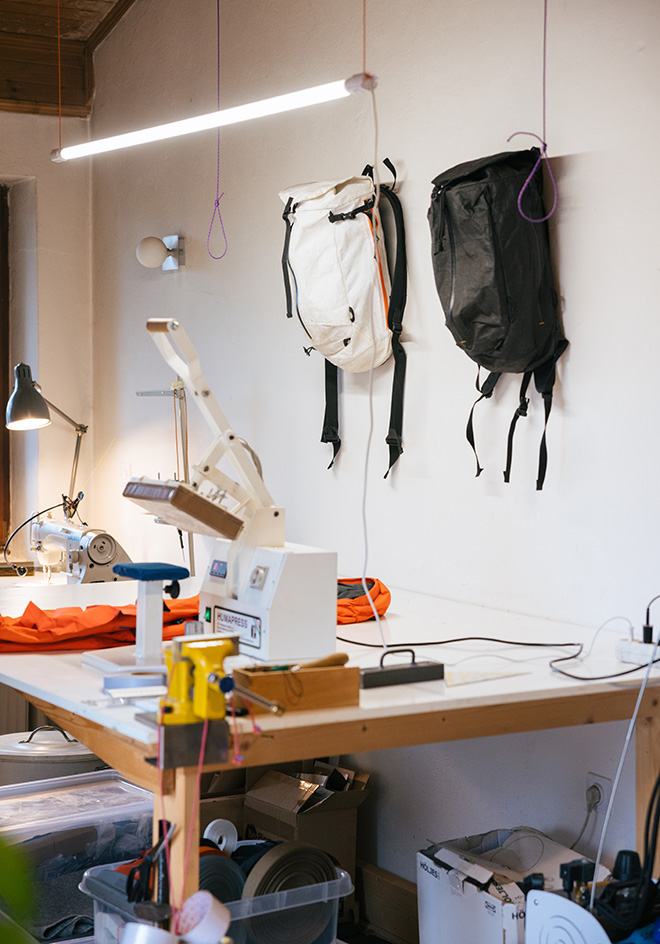
What’s your thoughts on building for durability versus light weight?
Balancing durability with weight is key in gear design. With careful material selection, it’s possible to achieve both. Personally, I prioritize creating products that can be easily repaired. I’ve seen many design flaws in the industry, often due to the wrong choice of materials. My approach to designing gear is shaped by these experiences.
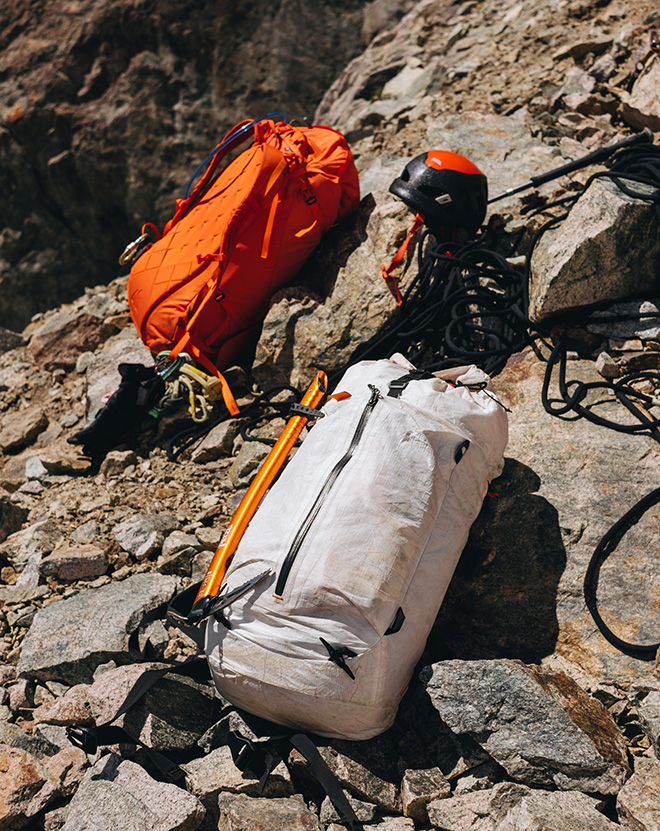
Do you have any materials you particularly enjoy working with? Are there any materials you’ve found quite challenging to work with?
In terms of materials, I have a strong preference for ULTRA by Challenge Sailcloth, which forms the backbone of my backpack designs. Occasionally, I also incorporate laminated Dyneema. These choices are deliberate, aimed at creating gear that can handle demanding environments, such as skiing in Antarctica, climbing mountains in the Himalayas, or bikepacking through a desert. Through extensive personal testing, I’ve developed a deep trust in the durability of these materials.
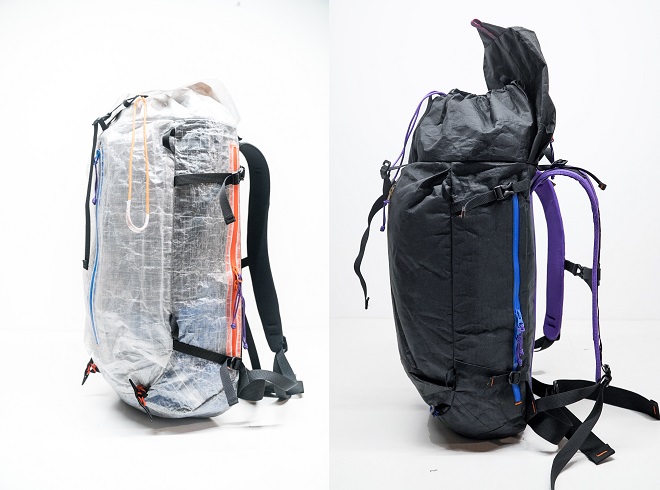
What is your favorite piece that you’ve made or worked on and why?
I recently had the opportunity to work on a set of backpacks for a Slovenian mountaineering expedition heading to the Himalayas. Each alpinist had their own specific needs and preferences, which made for an interesting design challenge. It was important to ensure that the backpacks looked cohesive as a team.
The primary focus was on designing backpacks that were exceptionally durable yet lightweight. This balance is crucial for high-stakes expeditions, where precision is imperative. The margin for error in such ventures is practically non-existent.
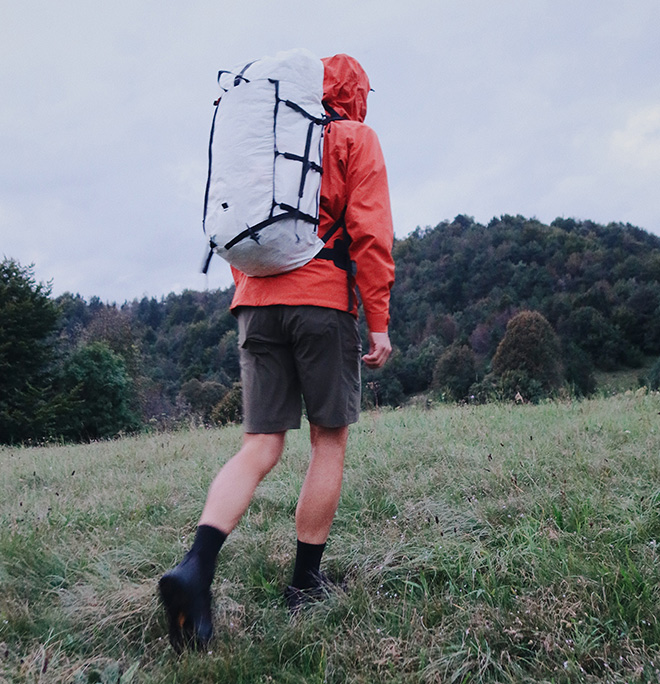
What’s been your greatest work challenge since starting What Happened and how did you overcome it?
The most significant challenge I’ve faced since starting What Happened has been finding the right balance to maintain the business at a manageable scale. Given that most of what I do revolves around my workshop, it directly fuels the inspiration behind What Happened. It’s a dilemma of sorts – do I opt for growth, potentially sacrificing a substantial degree of creative freedom, or do I opt to keep it on a smaller scale, preserving that core source of inspiration?
Striking this balance has been an ongoing process, and it involves careful consideration of the long-term vision for the business and personal fulfillment in my work. It’s about finding a path that allows for growth without compromising the essence of what makes What Happened special.
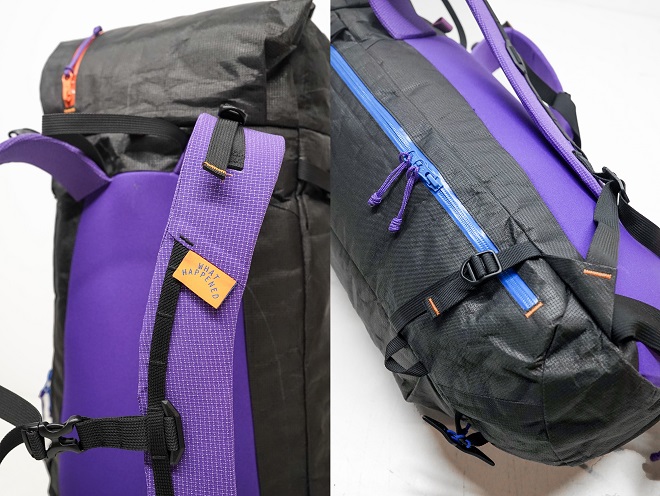
What do you think is the best benefit or reward about being a smaller maker compared to a larger global brand?
For me, the most rewarding aspect of being a small maker is the hands-on involvement in every product and ensuring its quality. Building personal connections with customers is also a highlight. I’m fortunate to have a wonderful community of customers. Occasionally, I even have the privilege of meeting them, sharing experiences like climbing or skiing together. This close-knit relationship brings a level of fulfillment and authenticity that may be harder to achieve on a larger scale.
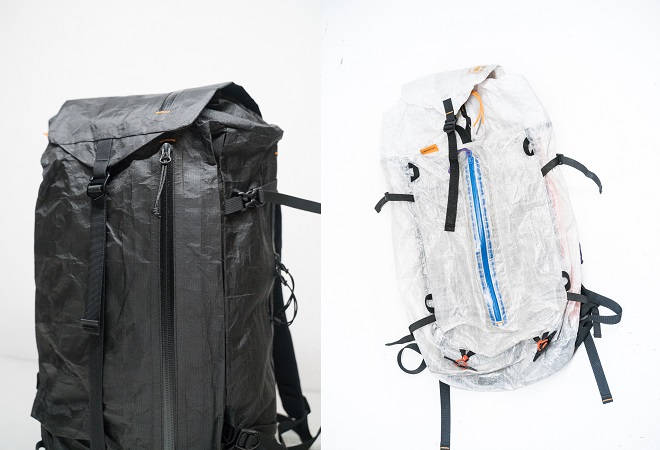
Who else is making gear right now that you love? Are there any designers who really inspire you or brands you particularly admire?
Leander from Racing Atelier is truly one of my major inspirations. His packs are akin to works of art, and the level of detail he puts into them is truly impressive. I’m also captivated by the creativity of Jaimus from Greater Goods. If I were to highlight a larger brand, I deeply appreciate the aesthetic approach that Arc’teryx brings to their bags.
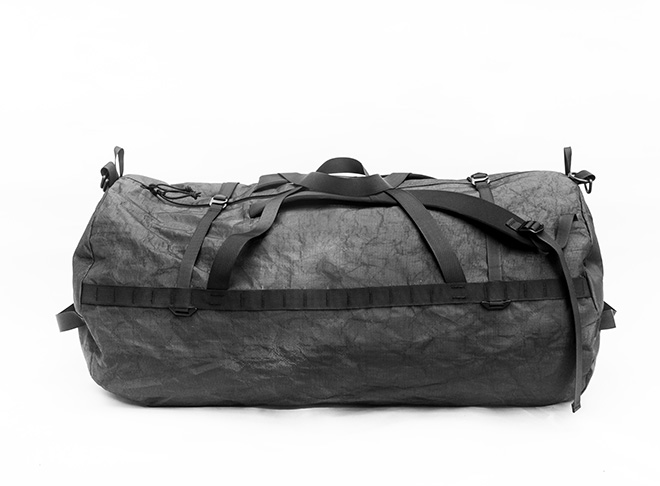
How do you find a work/life balance that suits you?
I often joke that I save work for less favorable weather days, but there’s a nugget of truth to it. When it’s sunny, you’ll likely find me in the mountains. I’m the type who can think and plan quite effectively, even while taking in the scenery on a downhill run. Some of my best ideas have sprung from these outdoor adventures. So, when I need a creative boost, a bit of fresh air always does the trick.
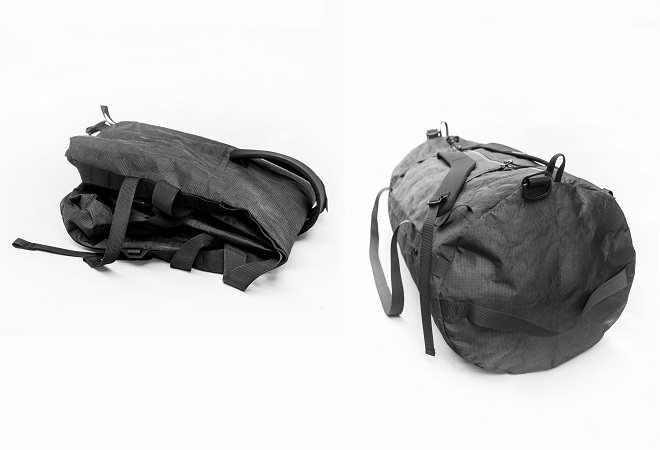
In the carry world what single specific innovation has stood out in your mind? Or do you have a piece in mind that you think has solved a particular problem really well?
In my opinion, the introduction of the roll-top closure as a solution has been truly groundbreaking. While I can’t pinpoint its first appearance, around 2010 there was a significant surge in brands incorporating roll-top designs into their backpacks. Prior to this, closures primarily relied on zippers, metal buckles, or Velcro. However, none of these options provided a long-lasting solution. The roll-top on the other hand marked a substantial leap forward in terms of durability.
What is next for What Happened? Are there any fun future plans or developments on the horizon you can share?
You know, I’m always looking for ways to make my bags even tougher and easier to fix up. And, of course, keeping things simple and light is a big focus.






 Carry Awards
Carry Awards Insights
Insights Liking
Liking Projects
Projects Interviews
Interviews





